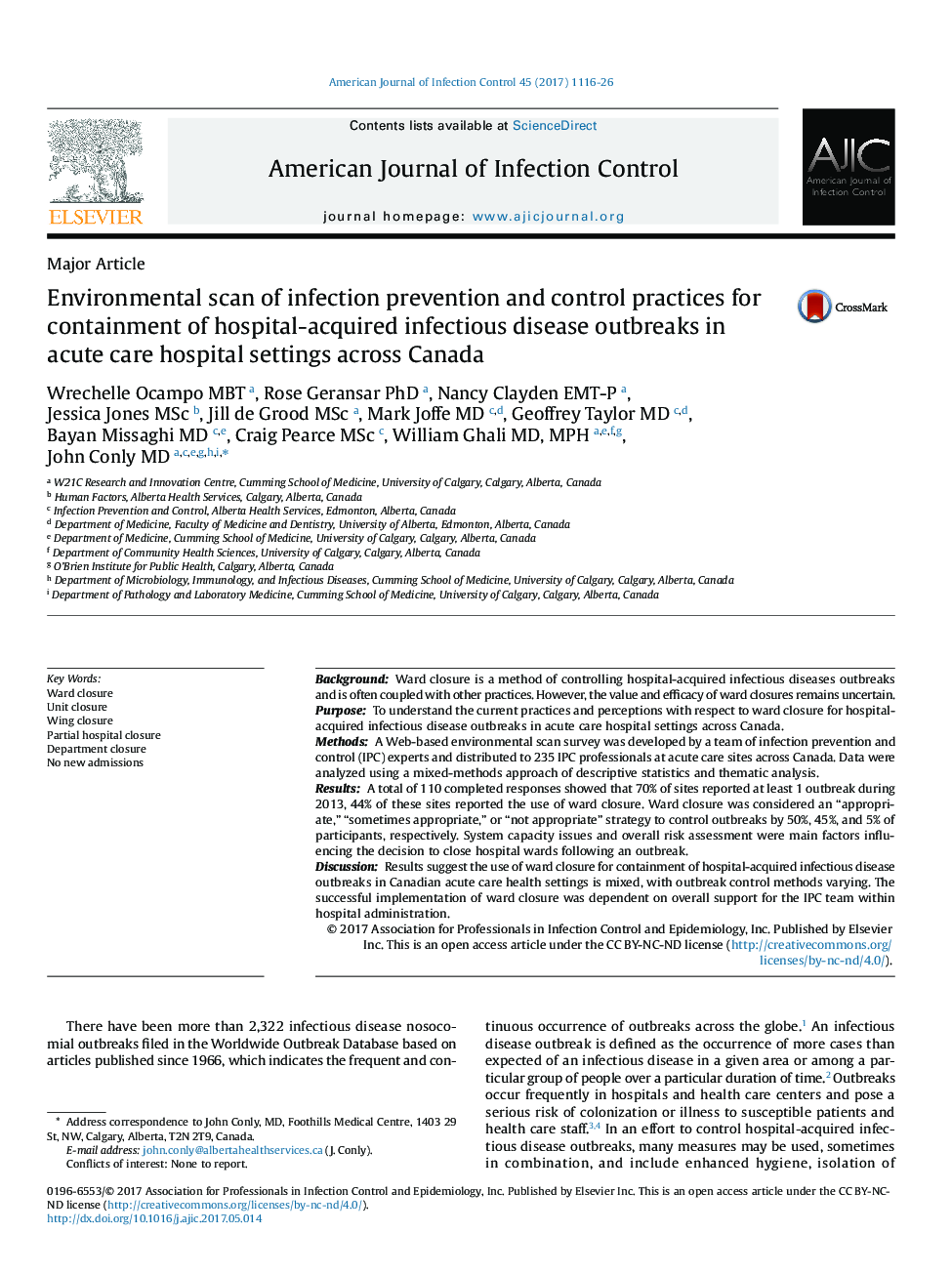| Article ID | Journal | Published Year | Pages | File Type |
|---|---|---|---|---|
| 5566175 | American Journal of Infection Control | 2017 | 11 Pages |
â¢Almost three quarters (70%) of sites reported having at least one outbreak in 2013, and ward closure was utilized in 44% of the sites.â¢Overcapacity was perceived to be the main limitation on the implementation of ward closure. Over three quarters of sites had an Overcapacity/Full Capacity Protocol (OCP/FCP), and 63% of those respondents reported that this protocol was used “frequently” or “continuously”.â¢Ward closure was considered as an appropriate strategy either in general by 50% or sometimes, under some circumstances by 45%.â¢Respondents who said that ward closure was “sometimes” appropriate indicated that it would be so only if other measures fail, after a risk assessment, or depending on the nature and extent of the outbreak.â¢Responses indicated that ward closure was generally used for acute and virulent enteric and respiratory outbreaks, but not outbreaks involving antibiotic resistant organisms (AROs).
BackgroundWard closure is a method of controlling hospital-acquired infectious diseases outbreaks and is often coupled with other practices. However, the value and efficacy of ward closures remains uncertain.PurposeTo understand the current practices and perceptions with respect to ward closure for hospital-acquired infectious disease outbreaks in acute care hospital settings across Canada.MethodsA Web-based environmental scan survey was developed by a team of infection prevention and control (IPC) experts and distributed to 235 IPC professionals at acute care sites across Canada. Data were analyzed using a mixed-methods approach of descriptive statistics and thematic analysis.ResultsA total of 110 completed responses showed that 70% of sites reported at least 1 outbreak during 2013, 44% of these sites reported the use of ward closure. Ward closure was considered an “appropriate,” “sometimes appropriate,” or “not appropriate” strategy to control outbreaks by 50%, 45%, and 5% of participants, respectively. System capacity issues and overall risk assessment were main factors influencing the decision to close hospital wards following an outbreak.DiscussionResults suggest the use of ward closure for containment of hospital-acquired infectious disease outbreaks in Canadian acute care health settings is mixed, with outbreak control methods varying. The successful implementation of ward closure was dependent on overall support for the IPC team within hospital administration.
